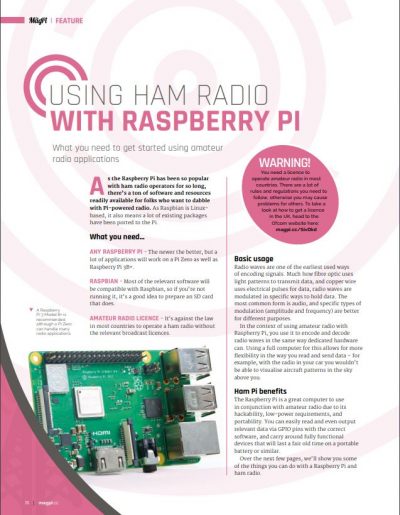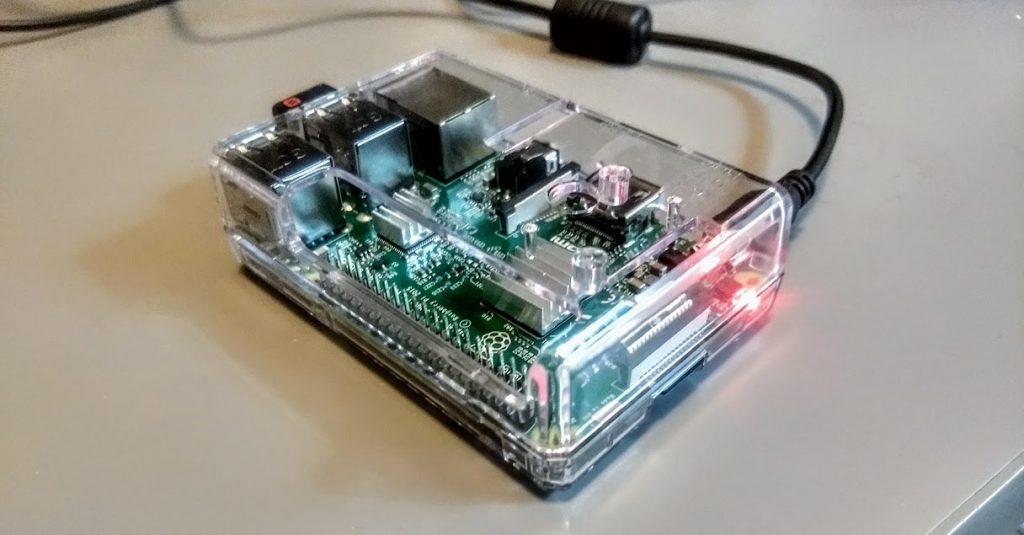Thanks to a hat tip from the Southgate ARC, I discovered that the excellent MagPi magazine has featured a number of ham radio projects in this month.
I’ve outlined below a list of the projects with page numbers–note that many are simply summaries that link to full project notes in previous editions:
- Page 52: Pictures from space via ham radio
- Page 71: ADS-B flight tracker (we also have a short tutorial here)
- Page 72: WSPR transmitter
- Page 73: Remote SDR scanner
- Page 74: Digital voice hotspot
- Page 75: Satellite tracking
- Page 75: APRS IGate
Issue 80 of MagPi is free (click here to download as a PDF). You can also pay for a print subscription via post as well.
I highly recommend downloading each issue of MagPi–it’s a brilliant, informative magazine and is chock-full of projects and ideas for Pi fans of any age.
I’m a big fan of the Raspberry Pi and use it for a number of applications. This issue has encouraged me to give WSPR a go and perhaps even build a DV hotspot in the near future.
Raspberry Pi kits are quite affordable–Amazon has a massive selection from bare-bones units to full packages which include everything you need to get started. I’m a fan of both Canakits and Vilros.
Click here to search Amazon.com (this affiliate link also supports the SWLing Post).
I also purchase Pi systems, accessories, and hats from AdaFruit.
Post Readers: Are you a fan of the Raspberry Pi or other mini computers? Please comment and share your projects/ideas!



One question I would love to see addressed is what to do about the noisy switching power adapter for the Pi. Even having one in the room with an HF receiver has been a problem in my experience.
Would love to see a schematic for a linear/regulated/filtered supply at the necessary current (>2.5A) that is also not multitudes more expensive than the Pi itself.
I’ve searched several times, and so far nothing.
The DietPi Linux distribution has short reviews of various low power boards in its website https://dietpi.com/.
To see the reviews scroll down the page until the images of the various boards are visible and click the images. Based on these reviews my favorite among the boards would probably be the Odroid C2.